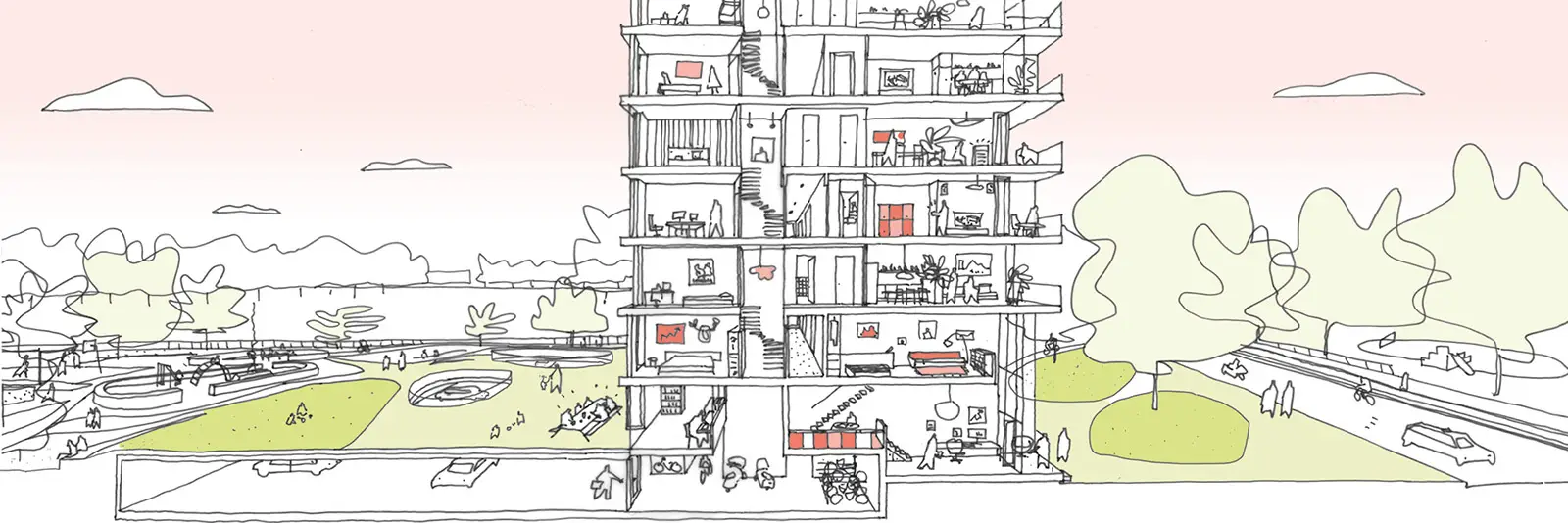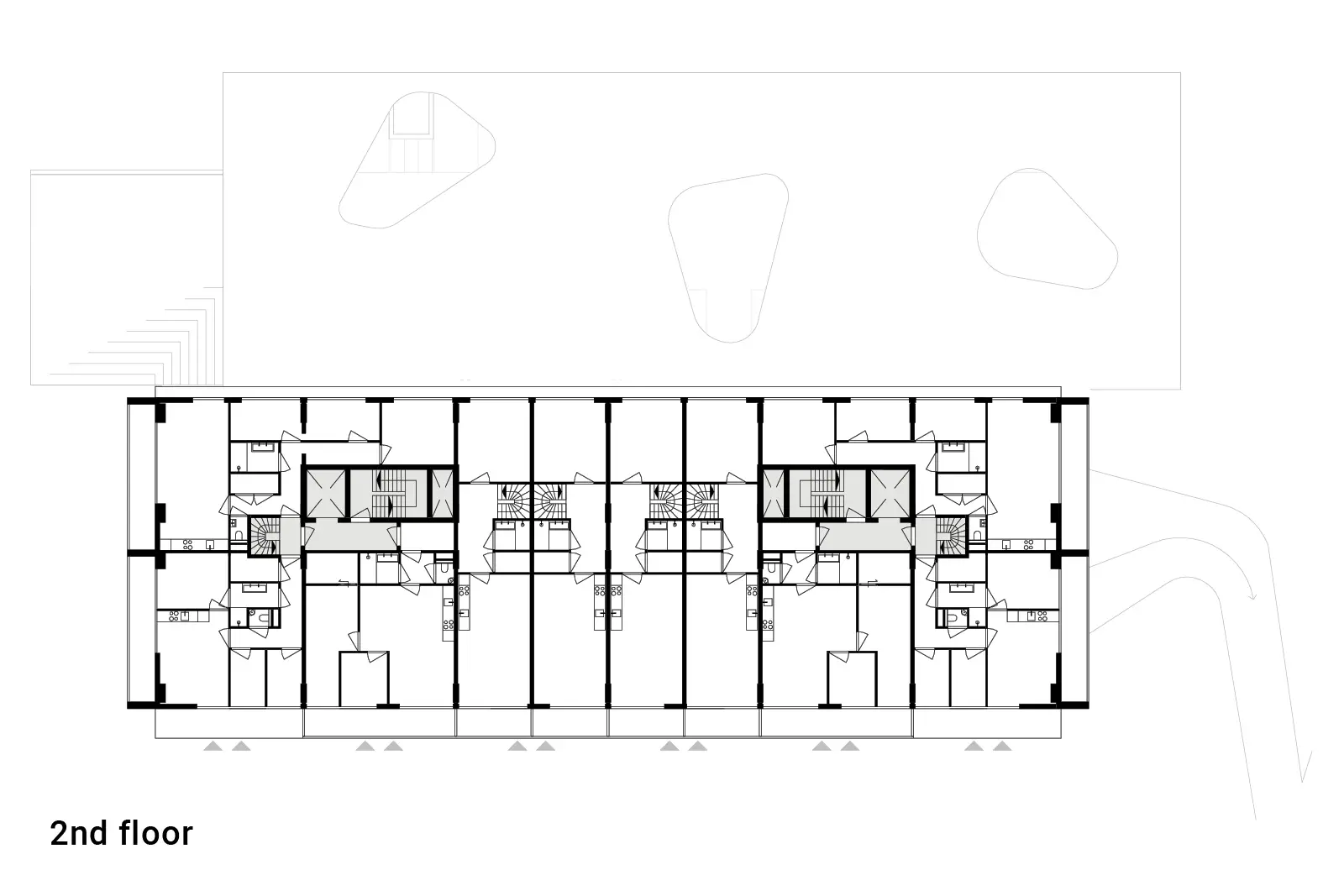This affordable housing project is an echo of modernistic times. Surrounded by green and a communal ground floor it introduces a sustainable addition that enriches its post war suburb.
We love the architectural realm of the modern era. The clean and functionalist aesthetic shaped post war cities in the Netherlands. Its focus on the individual happiness and comfort was combined with an impressive industrial production to answer the social difficulties of housing shortage. At this moment the Netherlands is again in urge for more and affordable housing, but now not in the form of large extensions of the city but by densifying these very areas. How to this in a respectful way starts of a new chapter in suburbs like New West in Amsterdam.
The design for De Baak is a continuation, in part a reinterpretation of the architectural qualities of the modernistic housing in New West. This typical suburb from the late 1950s and early 1960s is based on Van Eesteren’s urban development plan. The neighbourhoods at that time offered a huge improvement in living standards, larger houses, bathrooms, and individual bedrooms. Trees and lawns dominated outside space such as play areas and other facilities. The architecture is simple and functional, buildings like silent beauties that leave room for their green surroundings. With the design of De Baak we add a new elegant building by using a simple architectural expression that is characteristic of surrounding buildings from that modernistic period. Horizontal lines of framed outdoor spaces determine the image of this striking building. Materials are simple: wood, glass, and concrete.
The floor layout is efficiently focused on the quality of the home and outdoor space. Access is provided via a combination of a porch and central corridors. This creates an all-round plan with a series of housing types that are all oriented to the sun. The diversity of homes matches the population that the city of Amsterdam holds. Together with FLUX landscape we introduced a landscape around the building, that forms a gently sloping hill covering a parking garage. On the ground floor a large communal space, including educational space is connected to this park. It offers the possibility to build a community for the residents and neighbourhood. The common area feeds the park, and the park feeds the building.
We designed not only a building that has a socially positive impact on its surroundings, we also ensured the building offers a sustainable contribution by producing more energy than it uses. PV panels are elegantly integrated into the façade, heat pumps and aquifer generate sustainable energy. The building, constructed from prefabricated parts, is circular and can be adapted in the future. With rainwater harvesting from the roof the garden will be watered.
This project was a result of a competition won in 2020. OZ is responsible for the whole design process till completion. The building is designed and engineered in 3D in cooperation with our advisors. All BIM coordination with (sub)contractors is done by OZ.
PROJECT DATA
Client:
Kondor Wessels
Program:
123 apartments
between 65 m2 to 115 m2 GFO
communal facilities and garden
Status:
Completion 2023
In collaboration with:
Kondor Wessels vastgoed,
Flux landschap architecten,
De Wijde Blik, Pieters Bouwtechnek,
Arcadis
Team:
Jamie Bakkes, John Bosch,
Sylvia Visser
Artist impressions:
Vero Visuals
Photography:
Egbert de Boer
Valentijn Kortekaas






















